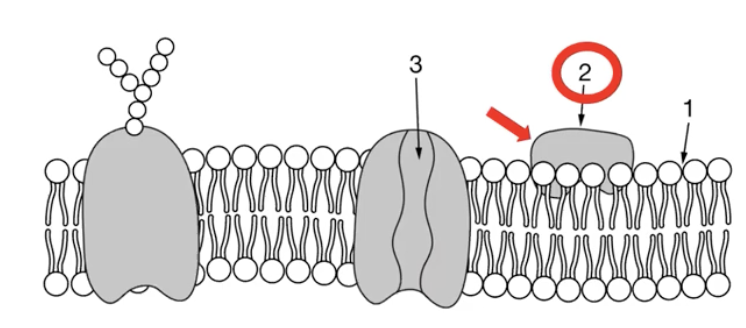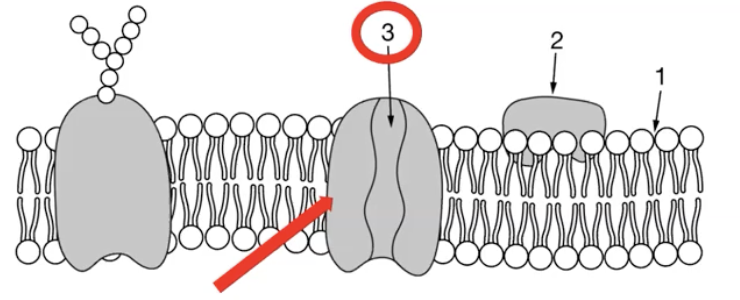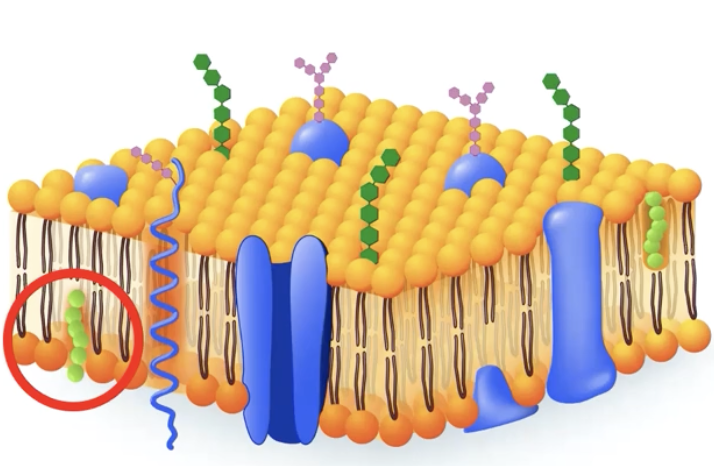AP Bio - 2.3 cell size & 2.4 plasma membranes
1/15
Earn XP
Description and Tags
Mostly 2.4
Name | Mastery | Learn | Test | Matching | Spaced |
|---|
No study sessions yet.
16 Terms
Why are cells typically small? (2.3)
Moving materials, such as nutrients and waste, in and out of cells gets more difficult the larger a cell is because of surface area-to-volume ratio
Amphipathic
hydrophilic and hydrophobic
How are phospholipids amphipathic?
hydrophilic phosphate head is polar, and hydrophobic fatty acid tail is non polar
Where are peripheral proteins found?
loosely bound to the surface of the membrane

Traits of peripheral proteins
Hydrophilic with charged and polar side groups
Where are integral proteins found?
Span the membrane

Traits of integral proteins
Hydrophilic with charged and polar side groups, hydrophobic with non polar side groups penetrate hydrophobic interior of bilayer of phospholipids
Ex: transmembrane proteins
What role do embedded proteins play in maintaining the internal environment of the cell?
Transport, cell-cell recognition, enzymatic activity, signal transduction intercellular joining, attachment for extracellular matrix or cytoskeleton
Fluid Mosaic Model
The framework of the cell membranes, structured as a mosaic of protein molecules in a fluid bilayer of phospholipids
Traits of the structure of the Fluid Mosaic Model
Structure is not static and is held together primarily by hydrophobic interactions which are weaker than covalent bonds. Most lids and some proteins can shift and flow along the surface or across the bilayer
Where cholesterol is found
Randomly distributed and wedged between phospholipids in the cell membrane of eukaryotic cells

Function of cholesterol
Regulates bilayer fluidity under different environmental conditions
Function of carbohydrates
Diversity and location of carbohydrates and lipids enable them to function as markers
Glycoproteins
One or more carbohydrate attached to a membrane protein
Glycolipids
Lipid with one or more carbohydrate attached